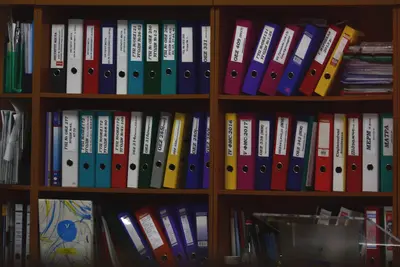📁 AlmaLinux File Server: Complete Samba & NFS Setup Guide
Hey there, file sharing expert! 🎉 Ready to build a powerful file server that can serve files to Windows, Linux, and Mac clients seamlessly? Today we’re setting up both Samba (SMB/CIFS) and NFS on AlmaLinux to create the ultimate cross-platform file sharing solution! 🚀
Whether you’re building a home media server, office file storage, or enterprise-grade shared storage, this guide will turn your AlmaLinux system into a file sharing powerhouse! 💪
🤔 Why is a File Server Important?
Imagine having all your files scattered across different computers, with no central place to store and share them! 😱 A file server centralizes storage and makes collaboration effortless!
Here’s why Samba & NFS on AlmaLinux are amazing:
- 🔄 Cross-Platform Sharing - Windows, Linux, Mac all work together
- 🔒 Centralized Security - One place to manage all access controls
- 💾 Efficient Storage - No more duplicate files everywhere
- 👥 Team Collaboration - Share files instantly across the network
- 📱 Universal Access - Access files from any device
- 🛡️ Backup Simplicity - Back up one central location
- ⚡ High Performance - Optimized for network file access
- 🎯 Version Control - Track changes and maintain file history
🎯 What You Need
Before we build your file sharing empire, let’s check what we need:
✅ AlmaLinux 9.x server (with sufficient storage) ✅ Network connectivity to client machines ✅ Static IP address recommended ✅ Firewall access for ports 445, 139, 2049 ✅ Storage space for shared files ✅ User accounts to manage access ✅ Basic networking knowledge 🌐 ✅ Patience for permissions (they can be tricky!) 😊
📝 Step 1: Install and Configure Samba
Let’s start with Samba for Windows-compatible file sharing! 🎯
# Install Samba packages
sudo dnf install -y samba samba-client samba-common cifs-utils
# Backup original configuration
sudo cp /etc/samba/smb.conf /etc/samba/smb.conf.backup
# Create main Samba configuration
sudo tee /etc/samba/smb.conf << 'EOF'
[global]
# Server identification
workgroup = WORKGROUP
server string = AlmaLinux File Server
netbios name = FILESERVER
# Security settings
security = user
map to guest = bad user
guest account = nobody
# Network settings
interfaces = lo eth0 192.168.1.0/24
hosts allow = 127. 192.168.1.
hosts deny = ALL
# Logging
log file = /var/log/samba/log.%m
max log size = 1000
log level = 1
# Performance tuning
socket options = TCP_NODELAY IPTOS_LOWDELAY SO_RCVBUF=524288 SO_SNDBUF=524288
read raw = yes
write raw = yes
max xmit = 65535
deadtime = 15
getwd cache = yes
# Character set
dos charset = CP932
unix charset = UTF-8
# Disable printer sharing
load printers = no
printing = bsd
printcap name = /dev/null
disable spoolss = yes
#======================= Share Definitions =======================
[homes]
comment = Home Directories
browseable = no
writable = yes
valid users = %S
create mask = 0664
directory mask = 0775
[public]
comment = Public Share
path = /srv/samba/public
browseable = yes
writable = yes
guest ok = yes
read only = no
create mask = 0664
directory mask = 0775
force user = nobody
force group = nobody
[shared]
comment = Shared Files
path = /srv/samba/shared
browseable = yes
writable = yes
valid users = @sambausers
create mask = 0664
directory mask = 0775
force group = sambausers
[documents]
comment = Company Documents
path = /srv/samba/documents
browseable = yes
writable = yes
valid users = @office
admin users = admin
create mask = 0664
directory mask = 0775
inherit permissions = yes
[backup]
comment = Backup Storage
path = /srv/samba/backup
browseable = no
writable = yes
valid users = admin, backup
create mask = 0600
directory mask = 0700
EOF
# Create share directories
sudo mkdir -p /srv/samba/{public,shared,documents,backup}
# Set up groups for Samba users
sudo groupadd sambausers
sudo groupadd office
# Set permissions
sudo chown nobody:nobody /srv/samba/public
sudo chown root:sambausers /srv/samba/shared
sudo chown root:office /srv/samba/documents
sudo chown root:root /srv/samba/backup
sudo chmod 755 /srv/samba/public
sudo chmod 2775 /srv/samba/shared
sudo chmod 2775 /srv/samba/documents
sudo chmod 700 /srv/samba/backup
# Enable and start Samba services
sudo systemctl enable smb nmb
sudo systemctl start smb nmb
# Check configuration
sudo testparmPerfect! Samba is configured! 🎉
🔧 Step 2: Create Samba Users
Now let’s create users for Samba access:
# Create Samba user management script
cat > /usr/local/bin/samba-user-manager.sh << 'EOF'
#!/bin/bash
# Samba User Management Tool
add_samba_user() {
read -p "Username: " USERNAME
read -sp "Password: " PASSWORD
echo
# Create system user
sudo useradd -M -s /sbin/nologin $USERNAME
# Add to groups
sudo usermod -a -G sambausers $USERNAME
# Set Samba password
echo -e "$PASSWORD\n$PASSWORD" | sudo smbpasswd -a $USERNAME
# Enable user
sudo smbpasswd -e $USERNAME
echo "✅ Samba user created: $USERNAME"
}
delete_samba_user() {
read -p "Username to delete: " USERNAME
# Remove from Samba
sudo smbpasswd -x $USERNAME
# Remove system user
sudo userdel $USERNAME
echo "✅ Samba user deleted: $USERNAME"
}
list_samba_users() {
echo "📋 Samba Users:"
sudo pdbedit -L
}
reset_password() {
read -p "Username: " USERNAME
read -sp "New Password: " PASSWORD
echo
echo -e "$PASSWORD\n$PASSWORD" | sudo smbpasswd $USERNAME
echo "✅ Password reset for: $USERNAME"
}
show_connections() {
echo "🔗 Active Samba Connections:"
sudo smbstatus
}
case "$1" in
add) add_samba_user ;;
delete) delete_samba_user ;;
list) list_samba_users ;;
password) reset_password ;;
status) show_connections ;;
*) echo "Usage: $0 {add|delete|list|password|status}" ;;
esac
EOF
chmod +x /usr/local/bin/samba-user-manager.sh
# Create initial users
echo "Creating sample users..."
sudo useradd -M -s /sbin/nologin john
sudo useradd -M -s /sbin/nologin alice
sudo usermod -a -G sambausers john
sudo usermod -a -G sambausers,office alice
# Set Samba passwords (you'll be prompted)
echo "Setting up Samba passwords..."
sudo smbpasswd -a john
sudo smbpasswd -a aliceExcellent! Samba users are set up! 🌟
🌟 Step 3: Install and Configure NFS
Now let’s set up NFS for Linux/Unix file sharing:
# Install NFS packages
sudo dnf install -y nfs-utils rpcbind
# Create NFS export directories
sudo mkdir -p /srv/nfs/{shared,projects,backup}
# Configure NFS exports
sudo tee /etc/exports << 'EOF'
# NFS Exports Configuration
# Shared directory for all clients
/srv/nfs/shared 192.168.1.0/24(rw,sync,no_subtree_check,no_root_squash)
# Projects directory with restricted access
/srv/nfs/projects 192.168.1.0/24(rw,sync,no_subtree_check,root_squash,anonuid=1001,anongid=1001)
# Backup directory - read-only for most clients
/srv/nfs/backup 192.168.1.0/24(ro,sync,no_subtree_check)
/srv/nfs/backup 192.168.1.10(rw,sync,no_subtree_check,no_root_squash)
# Home directories
/home 192.168.1.0/24(rw,sync,no_subtree_check,root_squash)
EOF
# Set NFS directory permissions
sudo chown nfsnobody:nfsnobody /srv/nfs/shared
sudo chown nfsnobody:nfsnobody /srv/nfs/projects
sudo chmod 755 /srv/nfs/shared
sudo chmod 755 /srv/nfs/projects
sudo chmod 755 /srv/nfs/backup
# Enable and start NFS services
sudo systemctl enable rpcbind nfs-server
sudo systemctl start rpcbind nfs-server
# Export the filesystems
sudo exportfs -arv
# Check exports
sudo exportfs -v✅ Step 4: Configure Firewall
Let’s open the necessary ports for file sharing:
# Configure firewall for Samba
sudo firewall-cmd --permanent --add-service=samba
sudo firewall-cmd --permanent --add-port=445/tcp
sudo firewall-cmd --permanent --add-port=139/tcp
# Configure firewall for NFS
sudo firewall-cmd --permanent --add-service=nfs
sudo firewall-cmd --permanent --add-service=rpc-bind
sudo firewall-cmd --permanent --add-service=mountd
# Reload firewall
sudo firewall-cmd --reload
# Verify open ports
sudo ss -tlnp | grep -E "445|139|2049|111"🎮 Quick Examples
Example 1: Advanced Samba Security
# Configure advanced Samba security
cat >> /etc/samba/smb.conf << 'EOF'
[secure]
comment = Secure Document Storage
path = /srv/samba/secure
browseable = no
writable = yes
valid users = @management
admin users = admin
create mask = 0600
directory mask = 0700
encrypt passwords = yes
smb encrypt = required
vfs objects = audit
audit:facility = local5
audit:priority = info
EOF
# Create secure directory
sudo mkdir -p /srv/samba/secure
sudo groupadd management
sudo chown root:management /srv/samba/secure
sudo chmod 2770 /srv/samba/secureExample 2: NFS Performance Tuning
# Optimize NFS for performance
cat > /etc/nfs.conf << 'EOF'
[nfsd]
# Number of NFS server threads
threads=16
# TCP settings
tcp=y
vers3=y
vers4=y
vers4.0=y
vers4.1=y
vers4.2=y
[mountd]
# Mount daemon settings
manage-gids=y
EOF
# Restart NFS with new settings
sudo systemctl restart nfs-serverExample 3: File Server Monitoring
# Create file server monitoring script
cat > /usr/local/bin/fileserver-monitor.sh << 'EOF'
#!/bin/bash
# File Server Monitoring
echo "📊 File Server Status Report"
echo "============================"
echo ""
# Samba status
echo "🔗 Samba Connections:"
sudo smbstatus --shares | grep -v "^$"
echo ""
echo "👥 Samba Users:"
sudo smbstatus --users | grep -v "^$"
echo ""
# NFS status
echo "📁 NFS Exports:"
sudo exportfs -v
echo ""
echo "🌐 NFS Connections:"
sudo netstat -an | grep :2049
echo ""
# Disk usage
echo "💾 Storage Usage:"
df -h /srv/samba /srv/nfs
echo ""
# System load
echo "⚡ System Performance:"
uptime
free -h
echo ""
# Recent logs
echo "📝 Recent Samba Logs:"
sudo tail -n 5 /var/log/samba/log.smbd
echo ""
echo "✅ Monitoring completed at $(date)"
EOF
chmod +x /usr/local/bin/fileserver-monitor.sh
# Schedule monitoring
(crontab -l 2>/dev/null; echo "0 */6 * * * /usr/local/bin/fileserver-monitor.sh >> /var/log/fileserver-monitor.log") | crontab -🚨 Fix Common Problems
Problem 1: Samba Access Denied
# Check user and permissions
sudo pdbedit -L
ls -la /srv/samba/
# Fix permissions
sudo chown -R root:sambausers /srv/samba/shared
sudo chmod -R 2775 /srv/samba/shared
# Reset Samba password
sudo smbpasswd username
# Check SELinux contexts
sudo setsebool -P samba_enable_home_dirs on
sudo setsebool -P samba_export_all_rw onProblem 2: NFS Mount Failures
# Check NFS services
sudo systemctl status rpcbind nfs-server
# Verify exports
sudo exportfs -v
# Re-export shares
sudo exportfs -ra
# Check client connectivity
rpcinfo -p localhost
# Test mount manually
sudo mount -t nfs localhost:/srv/nfs/shared /mntProblem 3: Slow File Transfer
# Optimize Samba performance
echo "socket options = TCP_NODELAY SO_RCVBUF=524288 SO_SNDBUF=524288" >> /etc/samba/smb.conf
# Tune NFS block size
mount -t nfs -o rsize=32768,wsize=32768 server:/path /mnt
# Check network settings
ethtool eth0📋 Simple Commands Summary
| Command | Purpose |
|---|---|
sudo systemctl status smb | Check Samba status |
sudo smbstatus | Show Samba connections |
sudo systemctl status nfs-server | Check NFS status |
sudo exportfs -v | List NFS exports |
samba-user-manager.sh add | Add Samba user |
sudo mount -t nfs server:/path /mnt | Mount NFS share |
sudo testparm | Test Samba configuration |
showmount -e localhost | Show NFS exports |
🏆 What You Learned
Congratulations! You’ve built a complete file server on AlmaLinux! 🎉
✅ Configured Samba for Windows file sharing ✅ Set up NFS for Linux/Unix sharing ✅ Created user management system ✅ Implemented security controls ✅ Optimized performance settings ✅ Built monitoring tools
🎯 Why This Matters
A well-configured file server is the backbone of any network! 🌟 You now have cross-platform file sharing that serves Windows, Linux, and Mac clients efficiently and securely! 🚀
Keep your file server maintained and monitored for best performance! ⭐🙌




